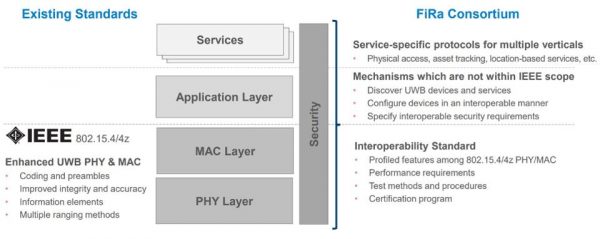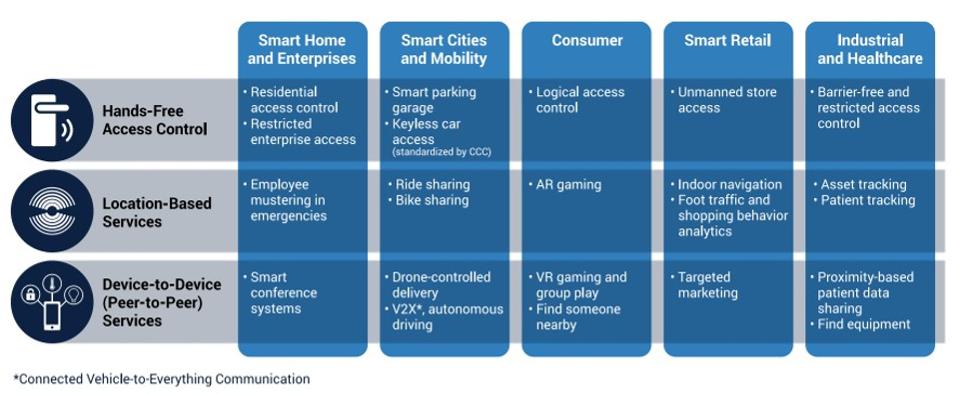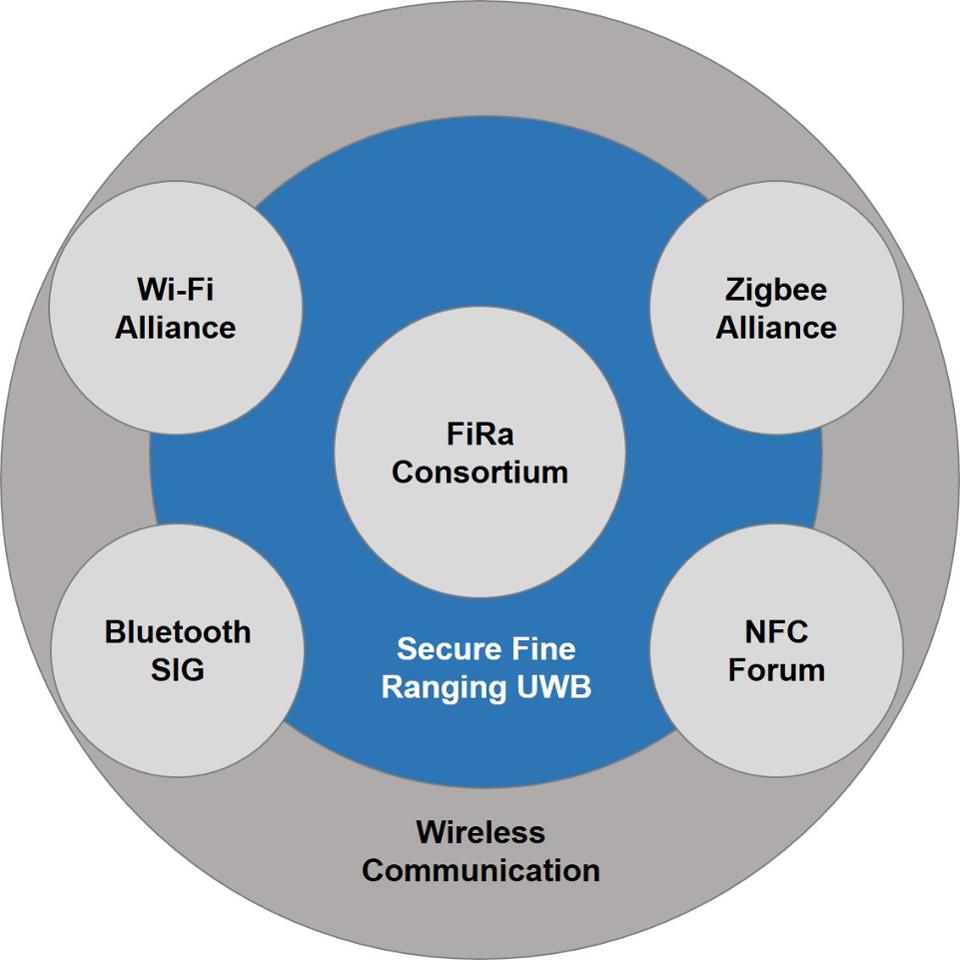Ultra-Wideband (UWB) Gains Traction As A Sensing Technology Under New Industry Consortium – Forbes
Ultra-Wideband or UWB was originally specified as a technology for high data rate communication but it achieved little traction due to direct competition with Wi-Fi. Since then, UWB has evolved from an OFDM-based technology to an impulse radio technology (specified in IEEE 802.15.4a) and from use in data communications to use in secure and precise ranging and sensing (specified in IEEE 802.15.4z). Using a high bandwidth channel and time-of-flight calculations, UWB can determine very precise location information with very low latency and a high degree of data security. This makes UWB a perfect solution for a broad range of applications ranging from secure access to gaming. One of the most common uses for UWB today is for car entry systems defined as the Digital Key by the Car Connectivity Consortium (CCC). Last month NXP announced its foray into the UWB segment because of its potential tracking capability across a wide range of applications. Today, Assa Abloy, Bosch, HID Global, NXP, and Samsung announced a new consortium called FiRa, short for Fine Ranging, to develop interoperability standards for UWB security and tracking applications.

FiRa will develop application standards on top of the IEEE 802.15.4/4z standards
FiRa Consortium
FiRa will leverage the IEEE 802.15.4 standard, which defines the characteristics of the UWB wireless interface. FiRa will then develop standards for the protocol stack, security keys, and everything else required to develop a secure interface for specific application segments. The FiRa Consortium will also be developing and performing interoperability testing to enable platform certification. The first application segment the consortium is targeting is secure access for applications beyond automotive. The first specifications for secure access are expected by the end of 2019. The consortium has also outlined many other potential consumer and industrial IoT applications ranging from smart homes and cities for gaming and healthcare.

UWB can provide access control, location-based services, and device-to-device services across a wide range of consumer and industrial applications
FiRa Consortium

The FiRa Consortium will collaborate with other industry organizations to ensure interoperability with the primary IoT wireless interfaces
Tirias Research and FiRa Consortium
What is unique about the approach of the FiRa Consortium is that it is not redefining the wireless interface and it is not trying to compete with the plethora of other IoT wireless interfaces that are already available. The goal of the consortium is to work in conjunction with the other wireless interfaces to provide security and precise tracking information. The consortium is already targeting Wi-Fi, Bluetooth, NFC, and Zigbee for collaboration. Note that Zigbee and Thread are two other interfaces defined under the IEEE 802.15.4 standard, but Thread was not mentioned in the announcement. The consortium’s intention is for FiRa to work in conjunction with the other wireless interfaces for security and sensor information and to provide a seamless handoff with the other wireless interfaces.
As a group, the founding members represents many of the leading companies in industrial, consumer, and access technology. Some of the founding members are also members of the other wireless interface alliance and/or the CCC, which is likely to help ensure consistency and interoperability with other standards. As with any industry consortium, other companies are welcome to join.
The consortium also provides a much-needed new brand for the technology – “FiRa.” UWB technology has been around for decades but has achieved little success for wireless communications. The hope is that the FiRa brand breaks the negative connotation associated with the technology.
The unfortunate part of starting a new consortium is that the standards are still forthcoming. This means that many, if not all, of the solutions in the market today and/or introduced over the next year or so will be non-standard solutions offering limited or potentially no compatibility with the new standards. With limited use of UWB today, this should not be a significant issue. In addition, technology vendors will often work with OEMs through the design cycle to upgrade to a certifiable solution once the standard is ratified.
With the increased focus on data and personal security, the use of UWB for secure access is a good addition to IoT applications. Additionally, the new applications and FiRa Consortium will provide a useful push to a useful but an underutilized technology.






